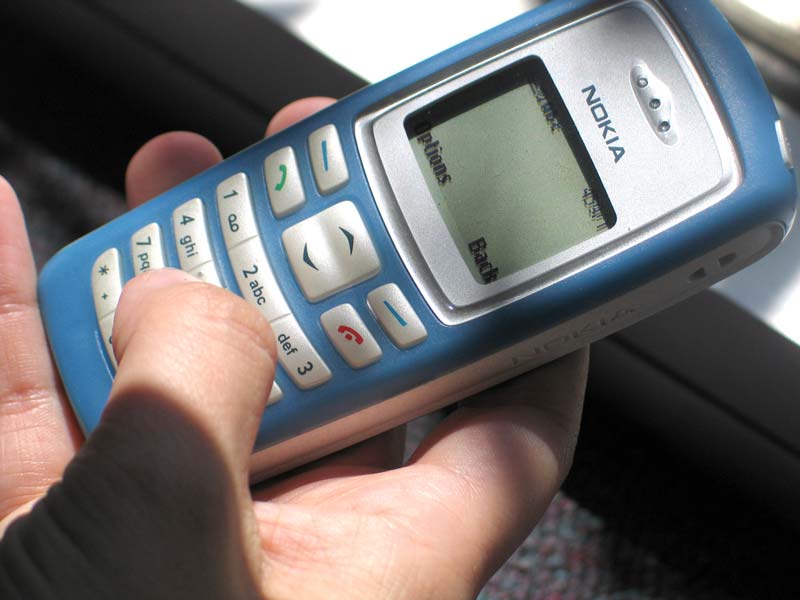
Phone Failure in Times of Emergencies
By Raina Kuptz
It was two days before Christmas. I’d returned home from visiting my mom at the hospital after a medical emergency situation. I had family texting and calling me to update them on her status, which I answered promptly. Now it was late, and I’d finally settled in for the evening, browsing Facebook mindlessly on my smartphone before trying to get some sleep. Then the phone went dead.
Phone down
Most people who have smartphones realize when the phone shuts off, it’s generally the battery. I was stumped in this case, because the phone was plugged in and charging. I fought with the phone a bit, trying to turn it on, finding a different charging cord, and otherwise attempting to problem-solve why the phone would not turn on. Eventually, I gave up, set my old-fashioned alarm clock – the kind with bells, the sort that could wake the dead – and managed to get some sleep.
 Bricked
Bricked
I don’t have a landline. Many people my age or younger do not. Having moved several times in a few years, trying to maintain a landline would only have been an extra expense and inconvenience. This proved problematic for the moment with my cellphone “bricked,” no sign of life from the charging light, no easily removable battery to pull and replace. I wanted to be available to family; my technological mini-disaster was proving to be a serious inconvenience.
Contact
Even without a phone, I was not entirely without contact to the outside world. I messaged my brother on the computer, updating him on the situation. I also grabbed a few phone numbers from him that I did not have memorized, jotting them down on an index card for myself and asking him to alert family on the situation. I did not want anyone to worry about me if they tried contacting me with no response.
Hunt for the phone
My next step was to drive to whatever store was open at 7 AM, in search of a prepay phone. I discovered that there are a number of prepay phones to pick from. I did not need something with a lot of bells and whistles, but I did want one that worked like a smartphone in terms of Internet connectivity – apps can help keep in contact and circumvent the need for a data plan.
What I learned was that there are a number of different brands, utilizing different carriers. The cheapest prepay phones went for about $10 and I got a wannabe-smartphone for a little more than that. You need to activate your phone using either a Wi-Fi connection or another phone, and you need to charge your phone because the battery may come fairly low. Finally, you need a very good pocket knife to get into the hazard that is plastic bubble packaging.
Activation
With my new prepay phone charging in my car and no Internet connection at hand, I realized I needed to find a second phone to activate the thing. Activation required either a call or a website sign-in to activate. I was off to visit my dad and activate the phone from his house – at 7:30 AM. This particular phone involved calling a number and inputting provided information, and I opted to add extra minutes to the small amount of time it came with. The entire cost for my temporary communication came to $20.
It’s important to note that prepay phones and even deactivated old cellphones will allow you to call 911 even if the phone is not activated and has no minutes. This means that owning duplicate prepay phones is useful; you can buy a few for $10 a pop, keep one in your bug-out bag, your bug-in gear, and one in the trunk of your car. If a situation comes up that you must call 911, you or your family can have access to a phone without having to find or borrow one.
Alternate phone number
Even though I had a usable phone now, nobody else had my new, temporary number. It took a little legwork on my part to spread the word that if anyone really needed to get in contact, they had to use the alternate number. Despite the trouble, my immediate family had a way to reach me, if the hospital emergency status changed, and I had means of keeping in contact with them.
Lesson learned
While I am not a hardcore prepper, I try to be reasonably prepared for short-term emergencies. I have an emergency car kit, a 72-hour kit, and tend to carry various general items on hand that I may need in a pinch. If a more serious emergency happens, having redundant technology was not at the forefront of my mind. “If the grid goes down, my cellphone isn’t going to work anyway!” But there are different levels of emergencies, and clearly the “Two is one and one is none” theory is relevant when it comes to communication.
Phone emergency preparation:
– Have a traditional address/phonebook with important contact information. It takes maybe 10-20 minutes to add phone numbers to a notecard or small notepad, to store in your bug-out bag or 72-hour kit.
– Make sure you have an automatic backup for your phone’s data. Most smartphones have this service. so if a mundane crisis occurs with your phone, your numbers and photos are not a lost cause. If you aren’t certain, talk to your phone provider to be sure things are backed up.
– If you find a good deal on a cheap prepay phone, buy extras and store them in convenient locations such as your trunk, your 72-hour kit or in a second location you frequent. If someone needs to call 911, a phone is readily available.
– Keep one activated backup phone ready, whether it be a prepay smartphone or a landline, and notify other people in your contact list also have that number. If something happens to your main line, you can still be reached.
– Save your battery life. In an emergency, you want the battery to last as long as possible, so it’s best to shut off Bluetooth, the Wi-Fi connection, and additional apps if unneeded. Keep your phone in a cool place when possible, turn down the brightness of the screen, and if your phone has an energy saver mode, turn that on.
We have become accustomed to having a phone all the time, so we can communicate not matter where we are. But phones are not failsafe: devise a strategy if something happens to your cellphone. You will gain some peace of mind for those moments when things don’t go as planned.



